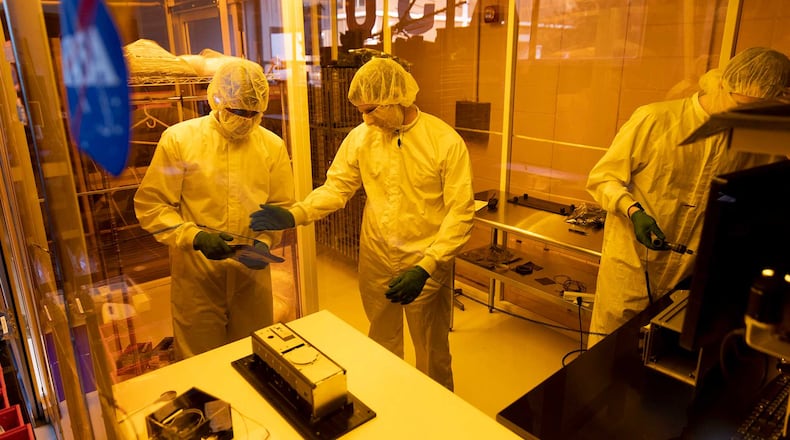A rocket carrying a satellite made by a team of University of Georgia students and faculty successfully launched into space Friday evening.
The launch from NASA’s Wallops Flight Facility along the Virginia coastline was scrubbed Thursday because of a problem with a piece of ground support equipment, not the rocket.
On Friday, there were no such problems. NASA described the launch as “perfect.”
The small satellite SPOC, short for Spectral Ocean Color, is the first research satellite ever that would be sent into space from UGA.
“If this mission is successful, it is going to bring more interesting projects,” said Deepak Mishra, a geography professor who is director of the university’s Small Satellite Research Lab.
What’s going to happen?
The rocket is scheduled to land at the International Space Station at about 3:45 a.m. Monday. In early November, Mishra said, space station astronauts will deploy the satellite to a location below the space station’s orbit. “That will be the moment of truth for us,” Mishra said.
What will the satellite do?
It will record images of Georgia’s coastline to see how the wetlands are changing, how what’s called “disturbance events” are changing the coast, coastal water quality and algae dynamics. The images will be sent to UGA, where researchers will study what’s being recorded. The UGA team hopes the satellite will operate for about two years. The satellite will eventually disintegrate as Earth’s gravitational pull brings it closer to the planet.
Credit: Courtesy of University of Georgia
Credit: Courtesy of University of Georgia
What does it look like?
The satellite is made of aluminum and is about the size of three tissue boxes joined together. It weighs about 8 pounds. Mishra noted more space satellites are smaller, and the UGA team wanted to make a small one as well. There are three solar panels on the satellite. It also has a circular device called an S-band patch antenna, which will be used to transmit the data.
How did this project come together?
The idea began in 2016. Let’s send something into space, students said. University researchers received a competitive research grant from NASA to secure a spot on a rocket. UGA created a lab to work on the satellite, and about 100 students worked on the effort. The entire project cost about $450,000, UGA officials said.
About the Author
Keep Reading
The Latest
Featured





